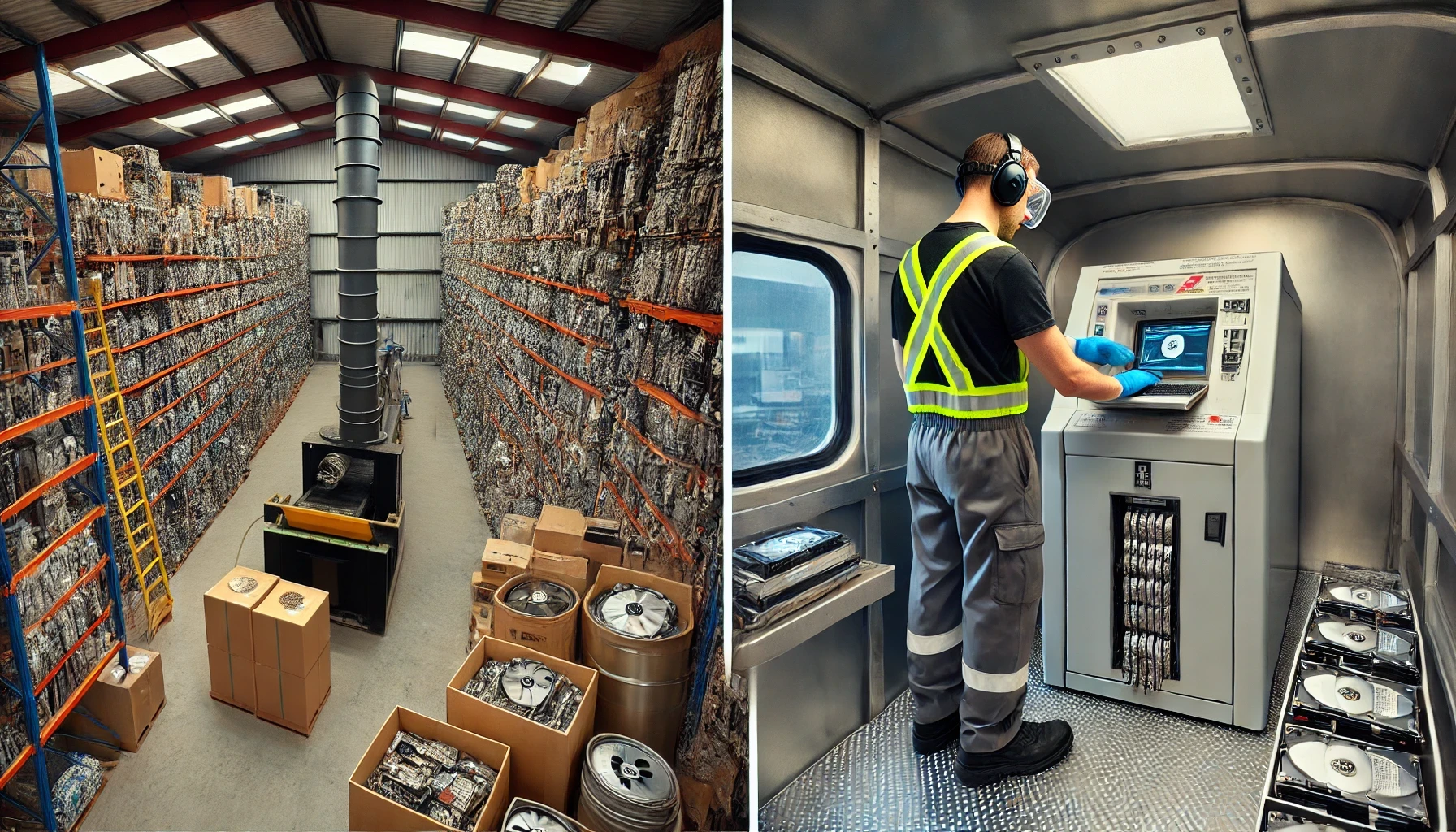Safeguarding sensitive information remains a top priority for businesses of all sizes. One critical aspect of this protection is the proper disposal of legal documents.
This article explores the two primary shredding options—on-site and off-site—each with its own set of advantages and drawbacks. We analyse the cost implications, key considerations for making the right choice, and factors to keep in mind to ensure your business stays secure while managing expenses effectively.
Whether weighing convenience against cost or searching for the best method to protect sensitive information, you’ll find insights to help inform your decision.
Why Shred Legal Documents?
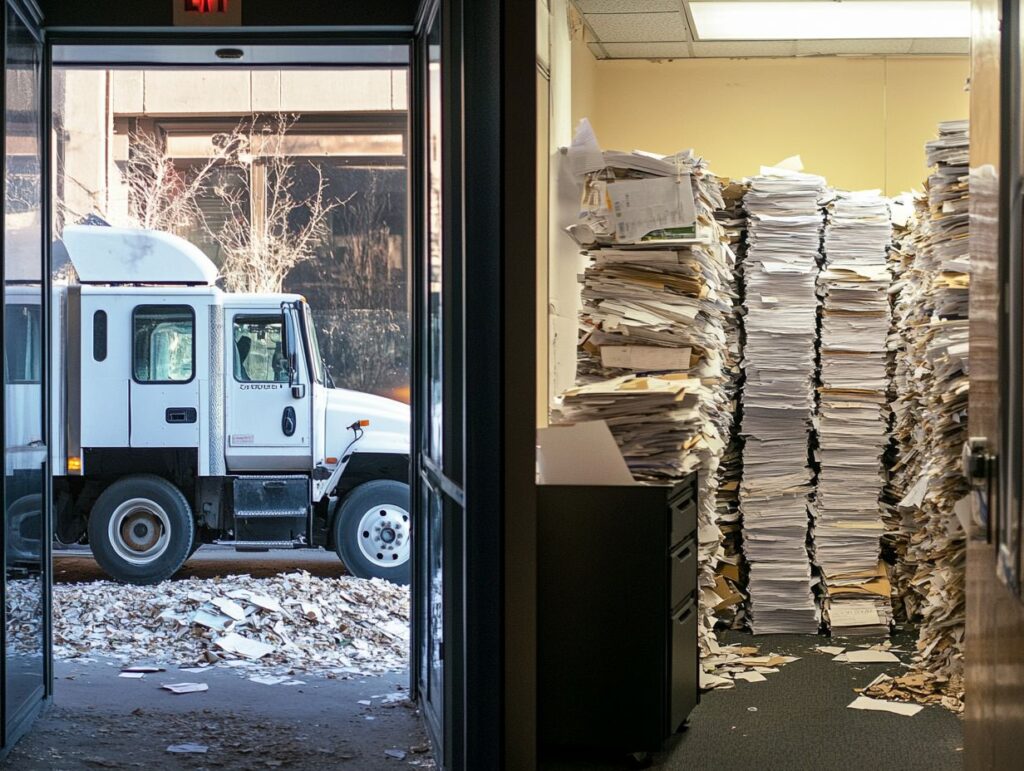
Shredding legal documents is essential for businesses to uphold confidentiality and adhere to various regulatory requirements. In an era characterised by the increasing prevalence of data breaches, effective document destruction practices are critical to ensuring that sensitive information remains protected, thereby safeguarding the organisation from potential liabilities.
Compliance with data protection laws is fundamental for establishing trust with clients and ensuring the security of their personal information. By implementing robust shredding policies, businesses not only mitigate risks associated with data theft but also demonstrate a commitment to compliance and ethical business practices, which subsequently enhances overall customer satisfaction and loyalty.
The consequences of failing to shred sensitive information can be severe, leading not only to financial penalties but also to reputational harm that may take years to rectify. Organisations are at risk of facing legal action from clients whose data may be compromised, potentially resulting in costly lawsuits and increased regulatory scrutiny.
Comprehensive risk management strategies necessitate regular audits and employee training on document handling, underscoring the importance of shredding as a means to protect against unauthorised access.
By cultivating a culture of awareness regarding the significance of document destruction, a business can create an environment that prioritises the protection of confidential information and minimises the potential risks associated with data mishandling.
On-Site Shredding: Pros and Cons
On-site shredding services provide businesses with the convenience of document destruction directly at their location, ensuring immediate peace of mind. This approach guarantees that sensitive information is securely shredded in real-time, significantly reducing the risk of potential data breaches.
Furthermore, on-site shredding enables organisations to enhance operational efficiency and comply with stringent regulatory requirements by allowing them to witness the shredding process firsthand. By collaborating with reputable shredding service providers, businesses can also take advantage of advanced shredding equipment that meets industry standards and bolsters facility security.
Benefits and Drawbacks of On-Site Shredding
On-site shredding offers numerous advantages, including enhanced security, immediate results, and improved time management for businesses managing sensitive documents. The ability to observe the shredding process in real-time significantly increases confidence in the reliability of the service, thereby safeguarding client confidentiality.
However, organisations must also consider potential drawbacks, such as the higher costs associated with mobile shredding services and limitations regarding the shredding capacity for large volumes of documents.
Furthermore, on-site shredding promotes a proactive approach to risk assessment by enabling organisations to address document disposal needs promptly, thereby mitigating the risk of data breaches. This level of direct oversight can be particularly advantageous for companies operating within regulated industries, where adherence to stringent privacy laws is essential.
Conversely, organisations may encounter logistical challenges, such as coordinating shredding schedules or managing unexpected equipment failures. Consequently, while the benefits of immediate security and convenience are compelling, potential clients should carefully weigh these factors against possible inconveniences to make a well-informed decision that aligns with their specific needs.
Off-Site Shredding: Pros and Cons
Off-site shredding provides a viable alternative for businesses managing substantial volumes of documents that necessitate secure destruction. This method not only offers an efficient solution but also addresses environmental considerations.
Although off-site shredding can be more cost-effective and capable of handling larger shredding capacities, it does raise important concerns regarding security and transport logistics. Organisations must ensure that their off-site shredding service providers adhere to industry regulations to safeguard sensitive data during transport.
Therefore, it is essential to conduct comprehensive compliance audits and risk assessments.
Benefits and Drawbacks of Off-Site Shredding
Off-site shredding offers numerous advantages, including the potential for reduced costs and the capacity to manage larger volumes of documents efficiently. This approach enables businesses to streamline their shredding policies and concentrate on core operations without the immediate necessity for on-site shredding equipment.
However, there are drawbacks associated with off-site shredding, such as diminished control over the shredding process and concerns regarding the overall security of documents during transportation. This situation necessitates a comprehensive comparison of vendors.
Organisations must carefully consider these factors, as the choice of the right vendor can significantly impact client confidence. A cost analysis frequently indicates that off-site shredding may yield savings in labour and equipment expenses; however, any potential cost benefits must be weighed against the implementation of rigorous security measures.
By evaluating various vendors, businesses can ensure they partner with those that provide secure and reliable services, thereby maintaining both budgetary constraints and the integrity of sensitive information.
Factors Affecting Cost of Shredding
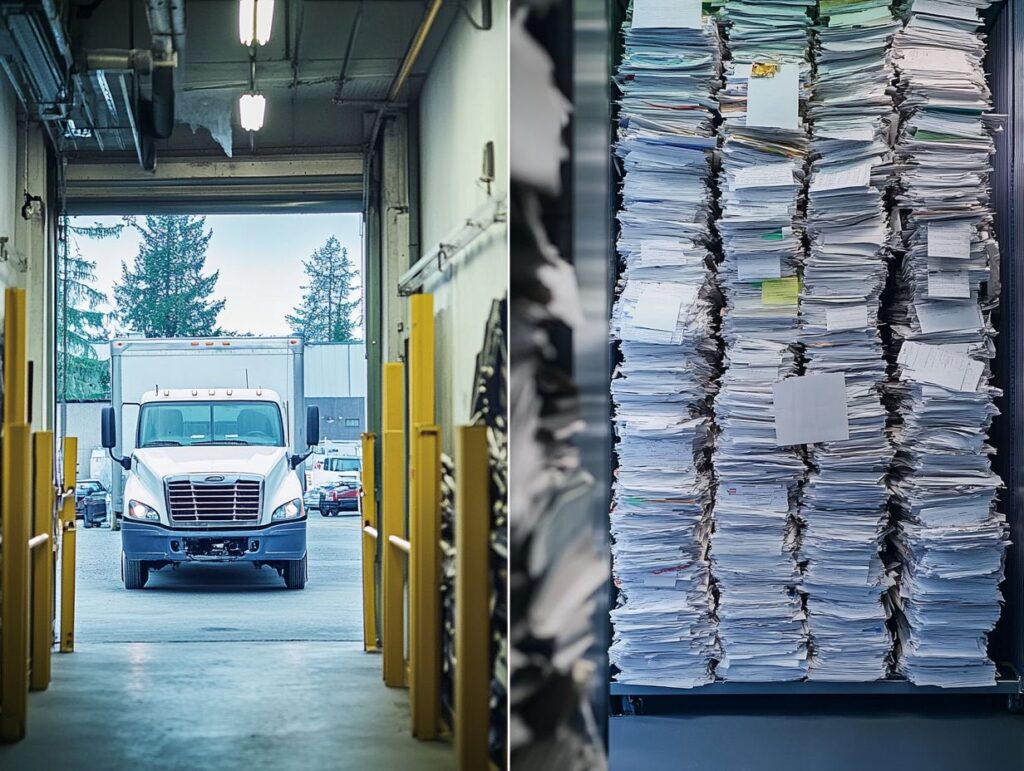
Understanding the factors that influence the cost of shredding services is crucial for businesses aiming to make informed decisions regarding document destruction. Several elements, including shredding options, the volume of documents, and operational costs, significantly impact the overall pricing structure of these services.
Furthermore, establishing clear service level agreements is essential for organisations to effectively budget while ensuring compliance with industry standards and meeting customer satisfaction benchmarks.
Key Considerations for Cost Comparison
When conducting a cost comparison for shredding services, businesses must consider several key factors, including shredding frequency and the specific needs of the organisation. Understanding the different pricing models offered by various service providers is essential for evaluating options that best align with organisational requirements and budget constraints.
Additionally, analysing potential liabilities associated with data breaches can further elucidate the value of investing in reliable shredding services.
For instance, organisations that manage sensitive customer information may need to opt for more frequent shredding to effectively mitigate risks. Furthermore, the decision between on-site and off-site shredding services can significantly impact overall costs. Different providers may present a range of packages, such as per-shred rates or monthly subscriptions, which can greatly influence total expenses.
Businesses should carefully assess the reputation and compliance standards of various shredding companies to ensure they meet regulatory requirements. By weighing these factors, organisations can make a more informed decision that addresses both financial considerations and the critical imperative for security.
Cost Comparison between On-Site and Off-Site Shredding
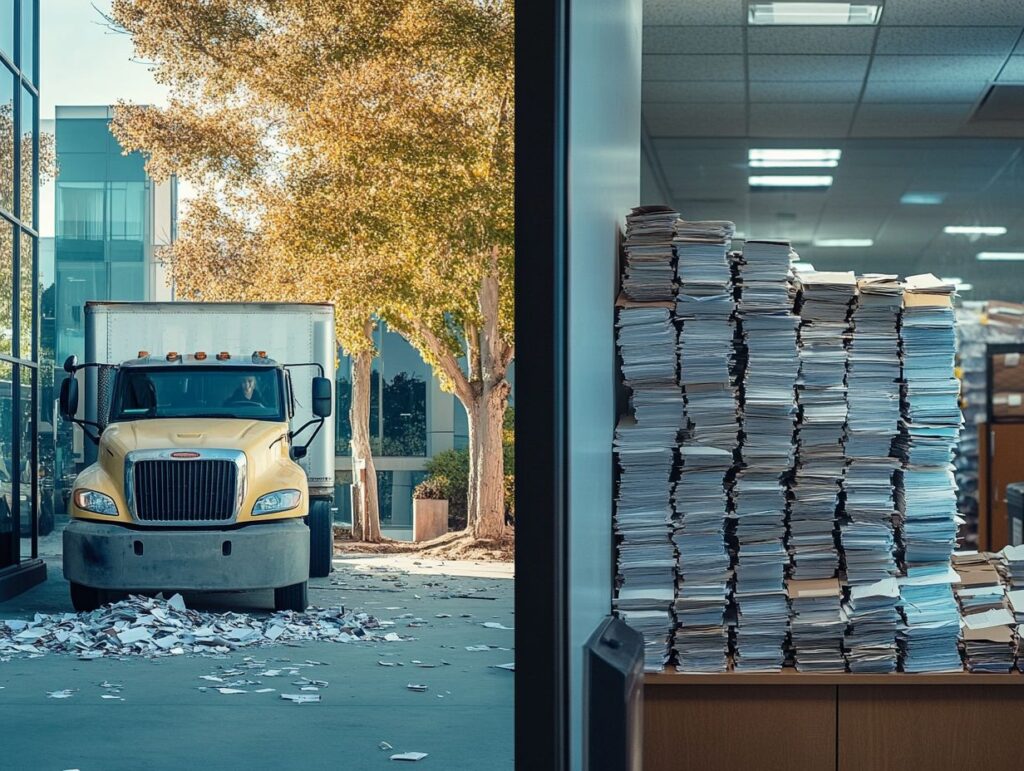
Conducting a cost comparison between on-site and off-site shredding is essential for businesses assessing their document destruction strategy.
On-site shredding provides immediate service and enhanced security; however, it often carries a higher price point compared to off-site services, which generally offer greater efficiency for handling large volumes of documents.
Moreover, analysing customer reviews and experiences can assist organisations in making informed decisions regarding the trade-offs between cost and security when selecting a shredding method.
Breaking Down the Numbers
Analysing the financial aspects associated with shredding services necessitates a careful examination of pricing structures, operational costs, and customer requirements to ascertain the most feasible option for document destruction.
Organisations should assess the costs per volume of documents shredded and the frequency of service required, while also contemplating potential savings derived from operational efficiencies. For example, on-site shredding generally incurs a higher cost due to its convenience and immediacy, allowing clients to observe the destruction process first-hand. Conversely, off-site shredding often provides a more economical solution for larger volumes, although it may entail additional logistics and transportation expenses.
The complexity of customer needs, such as the necessity for recurring scheduled services as opposed to one-off purges, significantly influences overall pricing. A comprehensive understanding of these factors enables companies to make informed decisions that are aligned with their specific document security requirements.
Which Option is Best for Your Business?
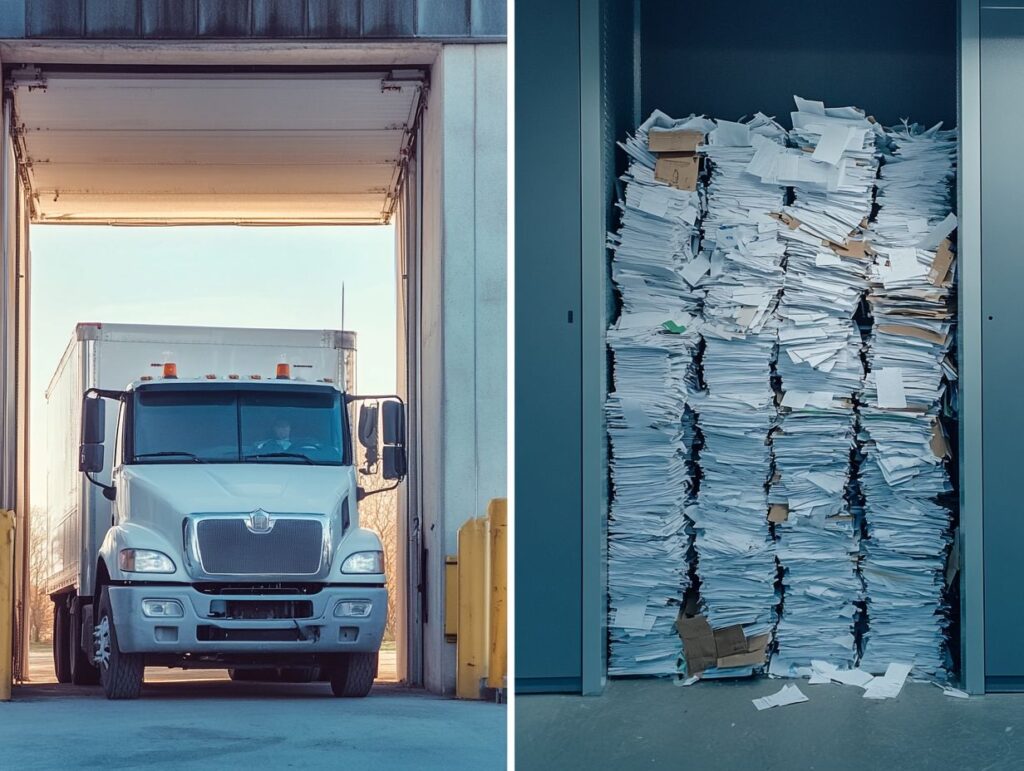
Determining the most suitable shredding option for a business necessitates a thorough evaluation of specific needs, a risk assessment, and a focus on client confidentiality priorities. Organisations must carefully consider factors such as shredding methods, document volume, and operational efficiency, while also accounting for compliance requirements and service flexibility.
By addressing these critical considerations, businesses can formulate effective shredding policies that are tailored to their unique operational contexts.
Factors to Consider when Choosing a Shredding Method
When selecting a shredding method, several factors must be considered, including confidentiality, compliance with industry regulations, and the environmental impact of disposal methods. Organisations should carefully evaluate their shredding options to ensure alignment with their goals and operational practices while mitigating any legal liabilities associated with data breaches.
In terms of confidentiality, it is essential for organisations to determine whether the chosen shredding technique guarantees the complete destruction of sensitive documents, ensuring that information cannot be reconstructed or retrieved afterwards.
Compliance is equally important; adherence to relevant laws and industry standards not only protects the organisation from potential fines but also fosters trust with clients.
The environmental impact of shredding methods should also be taken into account, as opting for eco-friendly solutions can reflect a commitment to sustainability and positively influence corporate reputation.
By balancing these factors, businesses can identify the most suitable shredding solution that addresses their unique needs.
Frequently Asked Questions
What is the difference between on-site and off-site shredding for legal documents?
On-site shredding means that the shredding process takes place at your location, while off-site shredding involves taking the documents to a separate location for shredding.
Which option is more cost-effective, on-site or off-site shredding?
In most cases, off-site shredding tends to be more cost-effective due to the economies of scale and specialised equipment used by shredding companies.
Are there any additional costs associated with on-site shredding?
Yes, on-site shredding may involve additional costs such as transportation fees, labour costs, and maintenance fees for the shredding equipment.
What are the benefits of choosing off-site shredding for legal documents?
Off-site shredding offers the convenience of having a professional shredding company handle the entire process, as well as providing a secure and efficient way to dispose of confidential legal documents.
Is there a difference in the level of security between on-site and off-site shredding?
Both options offer a high level of security, but off-site shredding may provide additional security measures such as GPS tracking of transport vehicles and secure storage of shredded materials before final disposal.
How can I determine which option is best for my legal documents?
You should consider factors such as the volume of documents, budget, and level of security needed when deciding between on-site and off-site shredding for legal documents. It may also be helpful to consult with a shredding company to assess your specific needs.

